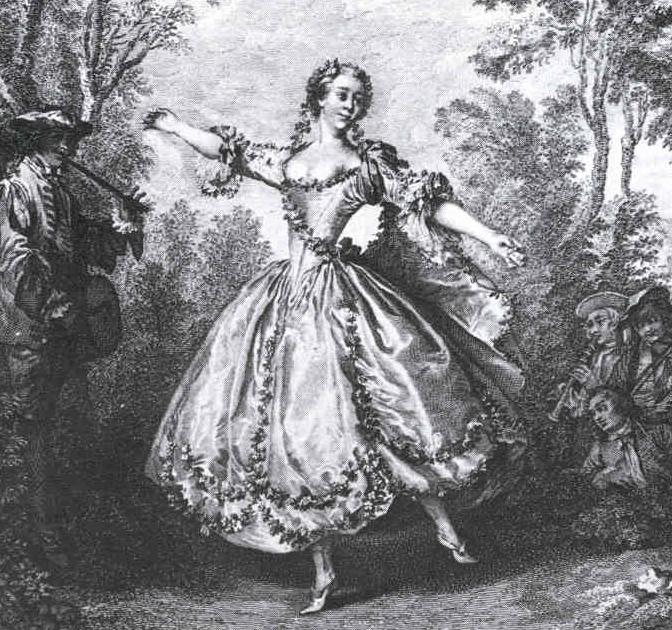Marie Camargo (1710-1770)

As you follow dancer after dancer you see that their careers overlap. It will be important for you to keep this in mind as I give a thumbnail sketch of their lives. Also know that there were many dancers who did not make the books, but I have said that every dancer promotes dance in some way, if only to help other dancers and teachers.
Marie Anne de Cupis was born in Brussels in 1710. She took the name of her Spanish mother's family. From the Camargo strain came her fire. During her youth she was patronized by court ladies and enabled at an early age to be instructed by Mlle Prevost. Mlle Prevost's young pupil made such progress that the older women grew jealous. Camargo made her Paris debut in 1726. The ballet was a series of short divertissements, enabling a virtuoso to display herself in period dances and pantomime. A critic wrote, "Mlle Camargo danced with all the liveliness and intelligence that could possibly be expected from a young person aged fifteen.....Her cabrioles and entrechats were effortless, although she has still many perfections to acquire before she can venture comparison with her illustrious teacher. She is considered to be one of the most brilliant dancers to be seen, in particular for her sensitive ear for music, her airiness, and her strength." Though her elevation was limited by heeled shoes, she is credited with having executed the entrechat quatre. But what is far more important, by shortening her skirt a few inches she opened up unimagined vistas of technical possibility.
She was a fierce rival of Marie Salle. Camargo retired in 1734 to live as the mistress of the Count de Clemont, but returned 1741-51, dancing 78 ballets with undiminished success. Even Noverre, who disliked her, had to admit Mlle Camargo had intelligence and made use of it in choosing a style which was lively and quick. "Ah! Camargo. How brilliant you are!" ran Voltaire's madrigal, though he added "But, great gods, how ravishing is also Salle."
Camargo's popularity set the fashion for her time, and many chefs created dishes named for this great ballerina. Painters painted her more beautifully than what Noverre described "neither pretty, nor tall or well formed. Her quickness of movement hid many of her flaws." Petipa and Minkus created a Camargo ballet, two operas were written about her by Enrico de Leva and Charles Le Cocq, and in London the CAMARGO SOCIETY was founded in 1930. In 1751 she retired on a pension from the French government.
(First published April 1991)